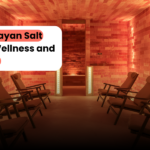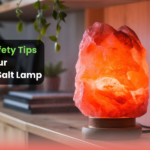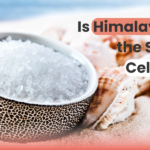Importance of Cleaning Your Himalayan Salt Block
Cleaning your Himalayan salt block is not just about maintaining its appearance; it is integral to ensuring its longevity and preserving its health benefits. A clean salt block guarantees that you can continue to use it for cooking and other purposes without contamination. Neglecting this essential upkeep can lead to a buildup of residue, which may affect the taste of your food and diminish the therapeutic qualities of the salt.
Benefits of a Clean Himalayan Salt Block
The advantages of keeping your Himalayan salt block clean are manifold. A clean salt block ensures that it retains its antibacterial properties, which are vital for safe cooking. It also prevents the absorption of unwanted odors and flavors, thus maintaining the pure, natural taste of your ingredients. Regular cleaning helps prevent cracks and prolongs the salt block’s life, making it a valuable investment in your culinary toolkit.
Understanding Himalayan Salt Blocks
What is a Himalayan Salt Block?
A Himalayan salt block is a solid slab of pure salt mined from ancient salt deposits in the Punjab region of Pakistan. These salt blocks are prized for their unique pink hue, which results from trace minerals such as magnesium, potassium, and calcium. These minerals not only give the salt its distinctive color but also enhance its health benefits.
Uses of Himalayan Salt Blocks in Cooking
Himalayan salt blocks are incredibly versatile and can be used for various cooking techniques. They can be heated on the stove or in the oven for grilling and searing meats, seafood, and vegetables. The salt imparts a delicate flavor to the food, enhancing its natural taste without overwhelming it. Additionally, these blocks can be chilled and used to serve cold dishes, such as sushi or cheese, adding a touch of elegance to your presentation.
Health Benefits of Himalayan Salt Blocks
Cooking with Himalayan salt blocks can offer numerous health benefits. The trace minerals present in the salt are absorbed by the food, contributing to your daily mineral intake. Moreover, the salt’s natural antimicrobial properties help reduce the risk of foodborne illnesses. Using these blocks can also lead to lower sodium consumption compared to traditional table salt, promoting heart health.
Preparing for Cleaning
Gathering Necessary Supplies
Before you begin cleaning your Himalayan salt block, gather all the necessary supplies. You will need a soft sponge or brush, mild dish soap, a clean cloth or paper towels, and a gentle scrubbing pad. Avoid using abrasive materials or harsh chemicals, as these can damage the salt block’s surface.
Safety Precautions Before Cleaning
Take a few safety precautions to ensure a smooth cleaning process. Make sure the salt block has cooled down completely if it was recently used for cooking. Handling a hot salt block can result in burns. Additionally, clean your salt block in a well-ventilated area to avoid inhaling any fine salt particles that may be released during the cleaning process.
Step-by-Step Cleaning Guide
1. Initial Rinse: Removing Surface Debris
Start by rinsing the salt block under warm running water to remove any loose debris or food particles. Do not soak the block in water, as this can cause it to dissolve.
2. Using a Soft Sponge for Gentle Scrubbing
Use a soft sponge or brush to gently scrub the surface of the salt block. Focus on areas with visible residue, applying light pressure to avoid scratching the surface.
3. Creating a Cleaning Solution: Water and Mild Soap
Mix a small amount of mild dish soap with warm water to create a gentle cleaning solution. Dip the sponge or brush into the solution and continue scrubbing the salt block.
4. Detailed Scrubbing Techniques
For stubborn spots, use a gentle scrubbing pad and apply a bit more pressure. Work in small, circular motions to lift the residue without damaging the block.
5. Rinsing Off Soap Residue
Once the block is clean, rinse it thoroughly under warm running water to remove all soap residue. Ensure no soap remains, as it can affect the taste of your food.
6. Drying the Salt Block Properly
Pat the salt block dry with a clean cloth or paper towels. Allow it to air dry completely before storing it. Proper drying is crucial to prevent the formation of cracks.
Advanced Cleaning Techniques
Using Lemon Juice for Stubborn Stains
For particularly stubborn stains, lemon juice can be an effective cleaning agent. Apply a small amount of lemon juice to the stain and let it sit for a few minutes before scrubbing gently with a sponge.
Applying Baking Soda for Deep Cleaning
Baking soda can also be used for a deeper clean. Make a paste with baking soda and water, apply it to the stained areas, and scrub gently. Rinse thoroughly afterward.
Preventing Damage While Cleaning
Always avoid using abrasive cleaners or scrubbing pads that can scratch the salt block. Additionally, do not immerse the block in water, as this can cause it to dissolve and weaken.
Common Mistakes to Avoid
Avoid using metal utensils or knives directly on the salt block, as they can leave scratches. Do not use the block over direct flames, which can cause it to crack. Always handle the block carefully to prevent drops or impacts.
Maintenance Tips for Longevity
Regular Maintenance Schedule
Develop a regular maintenance schedule to keep your salt block in top condition. Clean it after each use and inspect it for any signs of wear or damage.
Storing Your Himalayan Salt Block
Store your salt block in a cool, dry place to prevent it from absorbing moisture from the air. Wrapping it in plastic wrap or a clean cloth can help protect it.
Handling and Care Tips
Handle your salt block with care, especially when moving it while hot. Use oven mitts or tongs to avoid burns and accidental drops.
What to Do if Your Salt Block Cracks
If your salt block develops small cracks, you can continue to use it, but be cautious. For larger cracks, consider replacing the block to ensure safety and effectiveness.
Environmental Considerations
Eco-Friendly Cleaning Solutions
Opt for eco-friendly cleaning solutions to minimize your environmental impact. Mild soaps and natural cleaning agents like lemon juice and baking soda are effective and safe for the environment.
Proper Disposal of Himalayan Salt Block Waste
When it is time to dispose of your Himalayan salt block, do so responsibly. Break it into smaller pieces and dispose of it in accordance with local waste management guidelines.
Conclusion
Recap of Key Cleaning Steps
To maintain your Himalayan salt block, rinse it after each use, scrub gently with mild soap, rinse thoroughly, and dry completely. Regular cleaning ensures its longevity and effectiveness.
Encouragement to Maintain Cleanliness
Keeping your Himalayan salt block clean is a small effort with significant rewards. It enhances your culinary experiences and ensures the health benefits are retained.
Additional Resources for Himalayan Salt Block Care
Explore additional resources and guides on Himalayan salt block care to maximize your investment. Proper maintenance can extend the life of your salt block significantly.
Frequently Asked Questions (FAQs)
How often should I clean my Himalayan salt block?
It is best to clean your salt block after each use to prevent buildup and maintain its effectiveness.
Can I use soap to clean my Himalayan salt block?
Yes, but ensure you use a mild dish soap and rinse thoroughly to remove all residue.
What should I do if my salt block cracks?
Small cracks are normal and do not affect functionality. For larger cracks, consider replacing the block for safety reasons.
Comparison Table: Cleaning Solutions
| Solution | Effectiveness | Ease of Use | Environmental Impact |
| Mild Dish Soap | High | Easy | Low |
| Lemon Juice | Moderate | Moderate | Very Low |
| Baking Soda | High | Moderate | Very Low |
Tips for Effective Cleaning
- Always Cool Completely: Ensure the salt block is completely cool before cleaning to avoid burns.
- Use Gentle Pressure: Apply light pressure to avoid scratching the surface.
- Avoid Soaking: Do not soak the salt block in water to prevent it from dissolving.
- Dry Thoroughly: Pat dry and air dry completely to prevent cracks.
Case Study: Prolonging the Life of a Salt Block
A frequent user of Himalayan salt blocks, Chef Angela, shared her insights on maintaining her salt blocks for over two years. Her secrets include regular cleaning, using mild soaps, and avoiding direct heat exposure. Chef Angela’s meticulous care routine highlights the importance of consistent maintenance to extend the life and usability of Himalayan salt blocks.
By following these comprehensive guidelines, you can ensure your Himalayan salt block remains a reliable and beneficial tool in your kitchen, offering both culinary and health advantages for years to come.














